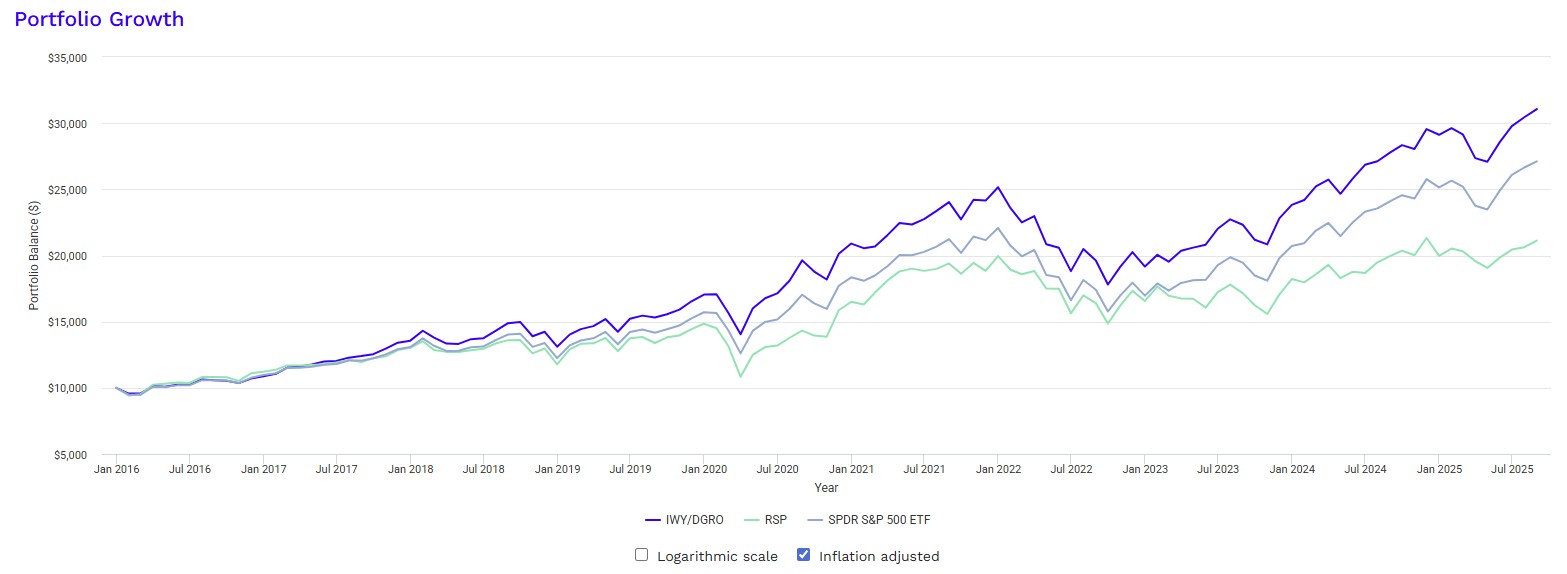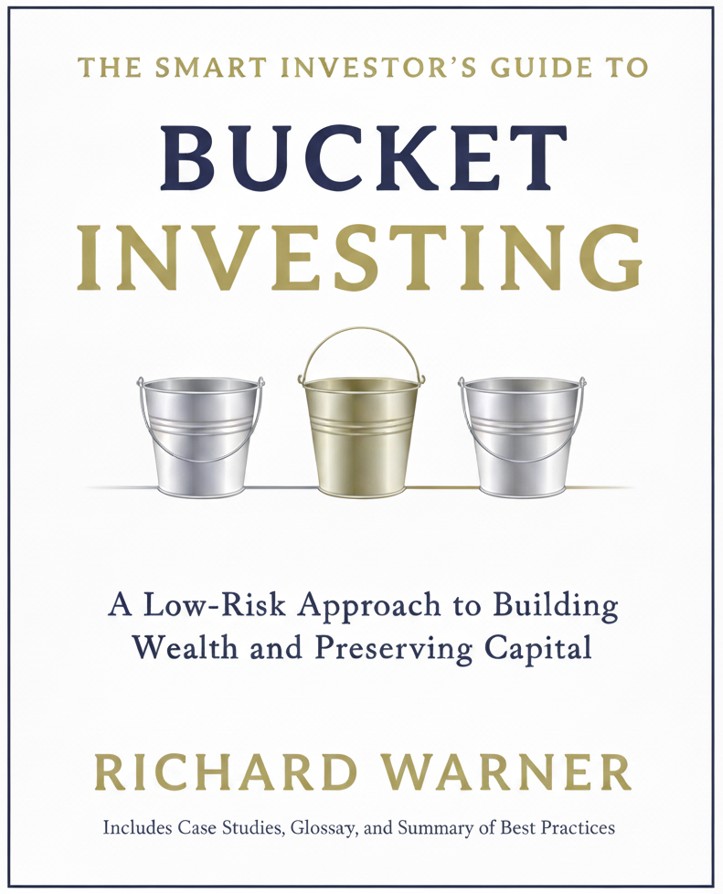Better than the S&P 500?
As far as the major benchmark indices are concerned, the Dow Jones Industrial Average of 30 stocks and the S&P 500 get all the publicity and attention. For years, financial advisors (FAs for short), have been allocating client funds to the S&P 500 as the primary or core equity holding. The 2 most popular S&P 500 index ETFs (exchange traded funds) are VOO (managed by Vanguard) and SPY (managed by State Street). Of the two, Vanguard has overtaken SPY in AUM (assets under management) because it does the exact same thing as SPY but at one-third the cost.
But there's a better way to get exposure the U.S. stock market than investing in the technology heavy, market-cap weighted S&P 500. The problem, especially these days, is that the S&P 500 is overly concentrated - the top 10 companies (9 of which are technology firms), constitute 40% of the index. At the previous market peaks (in 1980 and in 2000), the top 10 stocks represented 26% of the index. So, by these measures, we're testing the limits. If and when tech stocks fall out of favor, the S&P 500 will exhibit greater downside volatility than the rest of the market, which is undervalued on a relative basis.
Another approach would be to revert to RSP, Invesco's equal-weighted version of the S&P 500 index. With a 0.20% annual expense fee, it's slightly more expensive than VOO or SPY, but historically, it's outperformed the S&P 500 on a reward-to-risk basis. Currently, with tech stock valuations through the roof, RSP is a preferable alternative.
An even better approach, however, is to blend two highly competitive factor-based ETFs together instead. The first ETF is IWY - iShares' Russell Top 200 growth stocks. IWY's top 10 holdings are almost identical to SPY, but IWY factors rigorous growth criteria on top of a market cap screen. IWY starts with the 200 largest U.S. companies and from that list selects the top 100-110 growers (based on earnings and sales growth prospects). The factor screen is run annually and the fund is rebalanced quarterly.
The second fund is DGRO - iShares Core Dividend Growth ETF. The fund is comprised of about 400 companies with a solid, uninterrupted 5-year dividend growth track record. The fund filters out companies with excessively high dividend yields (as these are likely to be companies whose stock prices are caving), no REITs or MLPs, and the earnings payout ratio must be less than 75%. The last filter ensures that the company retains enough earnings for reinvestment and that the dividend is well-covered by current profits, making future growth more likely.
So how does a 50/50 allocation to IWY/DGRO perform vs. RSP vs. the S&P 500 index? Below is a cumulative total return chart of the 3 investment approaches, adjusted for inflation:

The blue line is the 50/50 IWY/DGRO portfolio; the mint green line is RSP; and the gray line is SPY. Not only does the IWY/DGRO portfolio outperform RSP and SPY, but its pullbacks are less severe than those of SPY. The bottom line is that the 50/50 IWY/DGRO portfolio may be the preferred approach for most long-term passive investors seeking equity exposure.
I discuss this equity investment approach in greater detail in my upcoming book The Smart Investor’s Guide to Bucket Investing: A Low-Risk Approach to Building Wealth and Preserving Capital. For most investors, I do not suggest allocating assets solely to equities - typically, a mix with more conservative ETFs makes the most sense.
Please note that past performance is no guarantee of future results. It is always advisable to consult with a certified financial advisor before making any investment decisions. The information in this post is meant for informational and educational purposes only.
Join Richard's email list
By following a set of guidelines and leveraging the power of
compound growth, investors can achieve their financial goals without having to assume much risk. Rich Warner's overall game plan for bucket investors is to:
a) Determine the time horizons for living expenses and key financial goals
b) Run asset allocations (portfolios) with risk levels appropriate for each time horizon
c) Try to maximize return within the risk level constraints
d) Review financial goals, monitor investment performance, rebalance, and adjust portfolios at least once a year.
In this book, Rich Warner shares some of his favorite model investment portfolios for various scenarios. He reveals the actual suggested percentage ETF weightings for nine different risk level assumptions. The book includes ten hypothetical case studies, a summary of key lessons that investors can apply, and common pitfalls to avoid.
©2025 RichardsPublishing.com | Cookie and Privacy Policy

